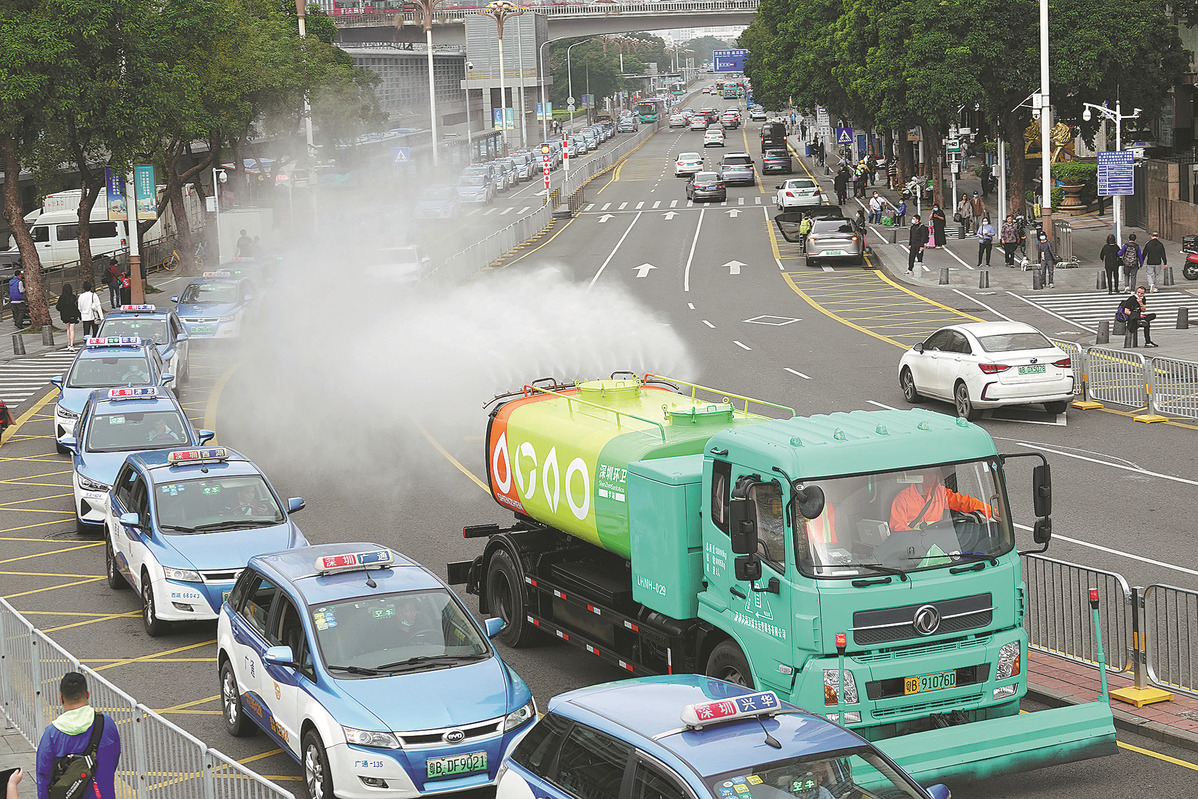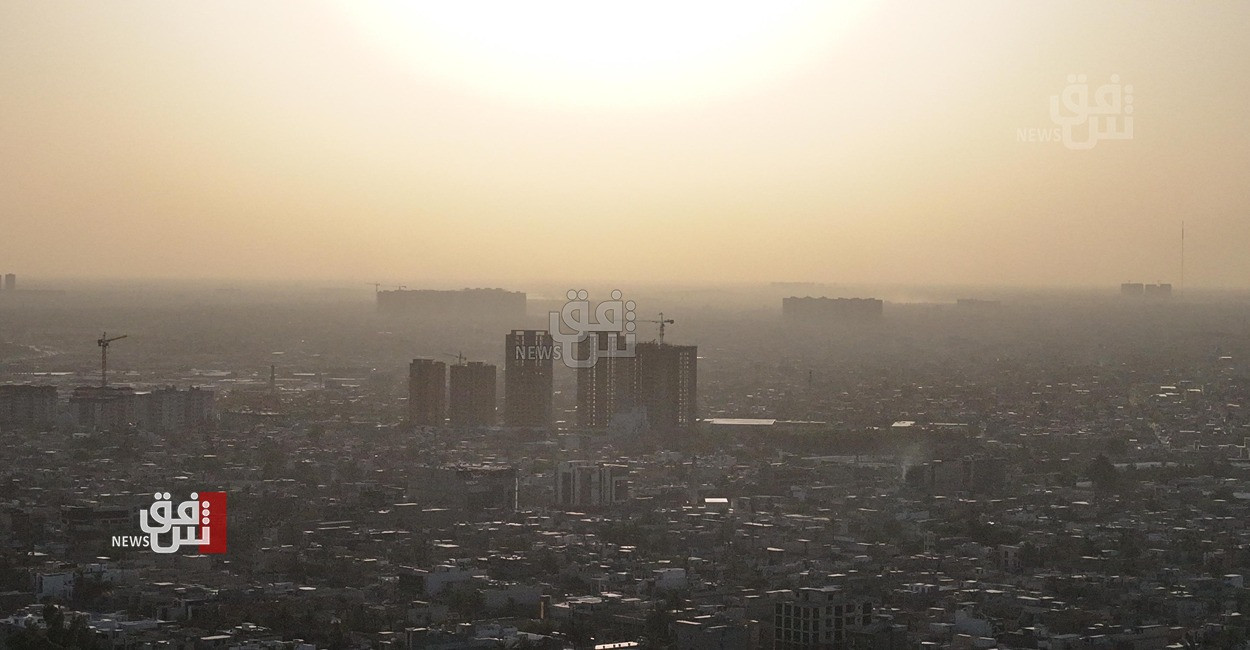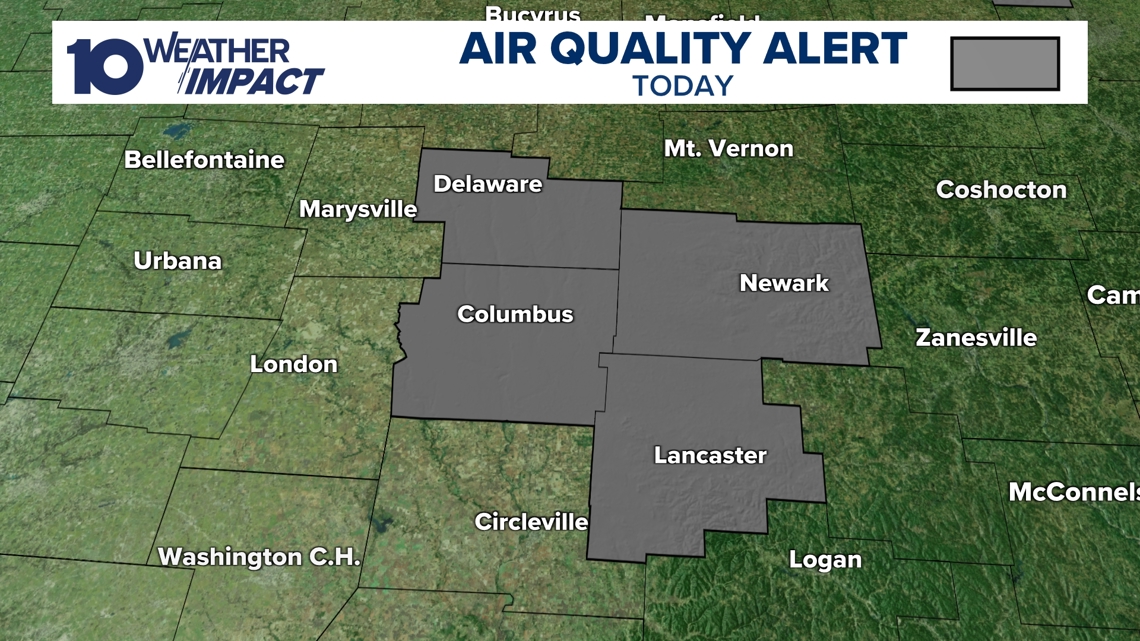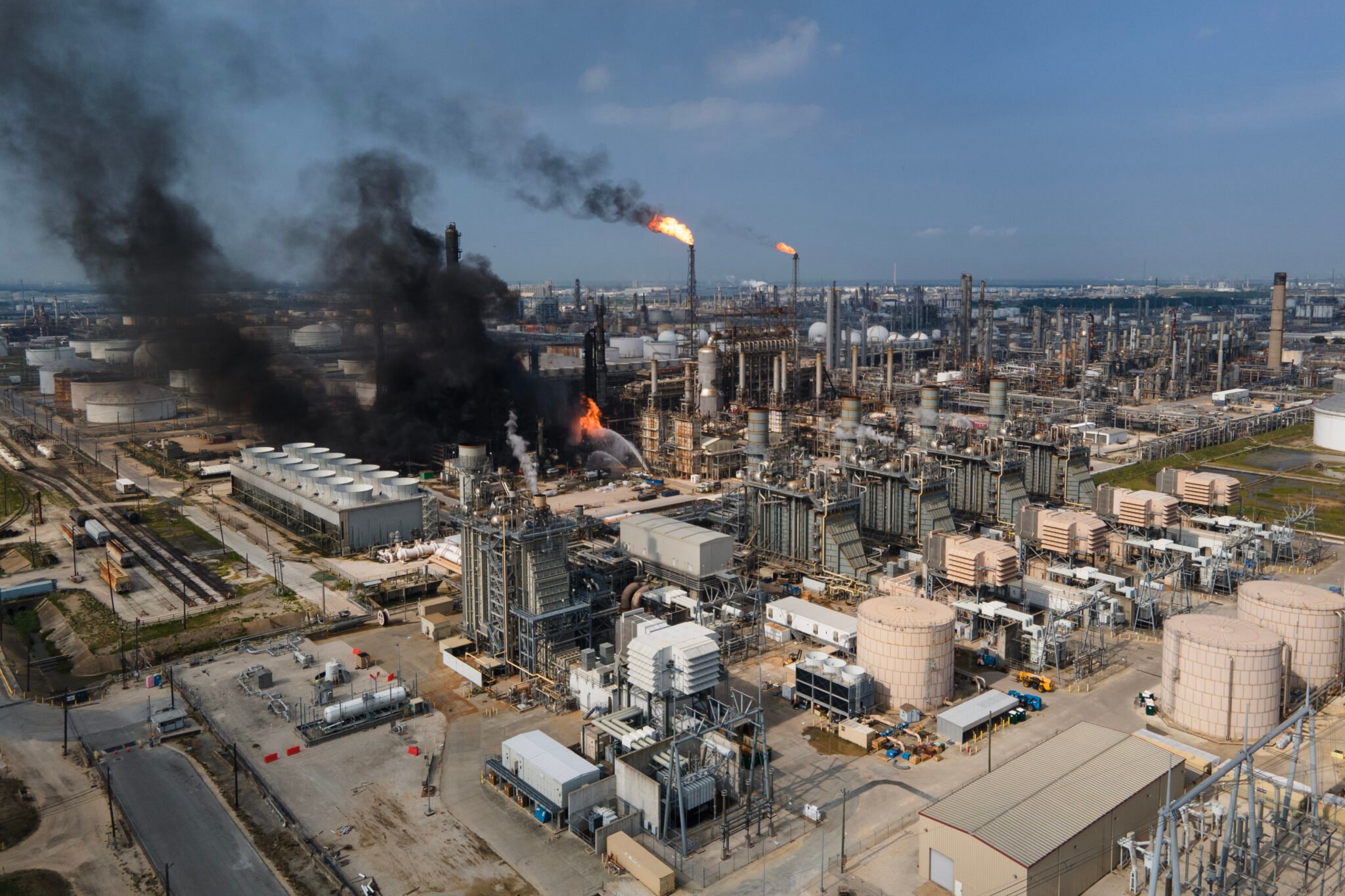
Sustainable Development Goals (SDGs) and China’s Efforts in Air Quality Management
Introduction

Workers spray water on roads in Shenzhen, Guangdong province, to suppress dust. CHINA DAILY
Buildings are shrouded in heavy, yellow smog and there is a smell in the air most likely generated by burning coal and biomass fuels.
Chu Yangxi, an associate research professor at the Chinese Research Academy of Environmental Sciences, remembers similar scenes in Beijing about a decade ago, which have since faded into memory.
He witnessed these pollution problems again when he was in Lahore, the capital of Pakistan’s Punjab Province, with two other Chinese environmental experts from Jan 14 to 17.
Local authorities invited the trio to Lahore in the hope of learning from China’s successful efforts to restore clean air and blue skies over Beijing in only a decade.
Chu had previously participated in international exchange programs on air quality management. However, the trip to Pakistan was different.
“It was my first time visiting a country involved in the Belt and Road Initiative for an activity in which I’m in a position to provide scientific and technological support,” he said.
China has received an increasing number of requests from developing countries to learn from the country’s experiences in improving air quality, as they themselves enter a development stage China has already undergone.
What makes China’s efforts appealing to them is that the country has seen its air quality improve while it has expanded its economy at a similar pace, experts said.
The different strategies deployed to control air pollution, which take into account complex national conditions, also make China a good exemplar of air quality management solutions, they said.
Sharing Ideas
In November, Chinese experts were asked to speak about the country’s air pollution control efforts with senior officials in Punjab via an online meeting. However, the Punjab government was still eager to arrange a field visit for them for more exchanges, Chu said.
During their stay in Pakistan, the Chinese team had exchanges with nine departments and visited industrial enterprises. They also met Mohsin Raza Naqvi, Punjab’s caretaker chief minister.
Chu said Punjab has great potential to tap end-of-pipe pollution control, an approach that concentrates on effluent treatment or filtration before waste discharges into the environment. The province, for example, has not yet taken adequate measures to control sulfur dioxide emissions, Chu said.
In another example of a fruitful exchange, the research academy was visited by a group of 85 military officers from across the globe on Jan 19 who were visiting China to take part in a workshop. Zhang Mengheng, director of CRAES’ International Cooperation Center, said one of the topics that interested the officers the most was Beijing’s air quality management.
“Some officers said they had heard a lot about the severe air pollution in Beijing before they came to the capital city,” she recalled. “They said it was beyond their expectations when they saw blue skies instead of smog and they were curious about how China managed to make this happen.”
The session at the academy was scheduled to run for two hours but was extended by 30 minutes as officers kept raising questions, Zhang said. Many of the officers asked for copies of the PowerPoint presentation the academy had prepared for a lecture, which focused on China’s practices and progress in environmental protection.
“China’s experiences can provide useful references for other developing countries as they are at a development stage China has just gone through,” Zhang said.
She added that China’s experiences should be localized in other developing nations so they cater to the actual needs and conditions of those countries.
However, Zhang also believes it’s relatively easy for Chinese scientists to localize the nation’s solutions on air pollution control in other countries given their vast experience in coping with the problem.
“While promoting the Beautiful China Initiative, China has also called for building a global community of shared future. So we are willing to share our experiences with the international community,” she said.
Alliance Suggested
Rajendra Shende, the founder director of the India-based Green TERRE Foundation, said in an interview with China Daily: “In a bid to make speedy progress in economic development, every emerging country faces the problem of air pollution due to the burning of fossil fuel.”
He said China, India and other emerging economies in South Asia should establish an alliance to combat climate change and air pollution and share the lessons they have learned.
Wang Shuxiao, a professor at Tsinghua University’s School of Environment, said there is high demand from the Global South to learn from China’s knowledge on curbing air pollution.
She helped prepare “The Air Pollution in Asia Pacific: Science-based Solutions” report for the United Nations Environment Programme, and since 2015 has collaborated on air quality management with India, the Philippines and Thailand.
The professor has seen many experts and officials from other nations come to China to learn about the country’s air quality management experiences.
Wang said a major attraction of the Chinese approach was that “the country has seen rapid air quality improvement, while simultaneously its economy has kept growing at almost the same pace”.
Instead of following a one-size-fits-all approach, regions have rolled out different measures based on their local circumstances, she said.
Many developing countries may still be able to find air pollution control strategies in China that will also meet some of their needs despite having different national conditions, Wang said.
What amazes other developing nations is that China has seen significant development in technologies for air quality management, which have provided solid support for the government in its drafting of air quality policies and upgrading standards, she said.
China now leads the world in developing high-resolution emission inventories and the technology for source apportionment — the practice of deriving information about pollution sources and the amount they contribute to ambient air pollution levels. In addition, China has also made great progress in air quality forecasting technologies and integrated assessment modeling.
Challenges Ahead
Lauri Myllyvirta, lead analyst at the Centre for Research on Energy and Clean Air, a Finnish group, said that while China still has a lot of work to do to reach good air quality across the entire country, the exceptionally rapid progress made over the past decade offered important lessons that applied to most regions struggling with air pollution.
“China substantially strengthened
SDGs, Targets, and Indicators
1. Which SDGs are addressed or connected to the issues highlighted in the article?
- SDG 3: Good Health and Well-being
- SDG 7: Affordable and Clean Energy
- SDG 11: Sustainable Cities and Communities
- SDG 13: Climate Action
- SDG 17: Partnerships for the Goals
2. What specific targets under those SDGs can be identified based on the article’s content?
- SDG 3.9: By 2030, substantially reduce the number of deaths and illnesses from hazardous chemicals and air, water, and soil pollution and contamination.
- SDG 7.1: By 2030, ensure universal access to affordable, reliable, and modern energy services.
- SDG 11.6: By 2030, reduce the adverse per capita environmental impact of cities, including by paying special attention to air quality and municipal and other waste management.
- SDG 13.1: Strengthen resilience and adaptive capacity to climate-related hazards and natural disasters in all countries.
- SDG 17.6: Enhance North-South, South-South, and triangular regional and international cooperation on and access to science, technology, and innovation and enhance knowledge sharing on mutually agreed terms.
3. Are there any indicators mentioned or implied in the article that can be used to measure progress towards the identified targets?
- Number of deaths and illnesses related to air pollution and contamination
- Access to affordable and reliable energy services
- Air quality in cities
- Resilience and adaptive capacity to climate-related hazards
- International cooperation and knowledge sharing on air quality management
Table: SDGs, Targets, and Indicators
| SDGs | Targets | Indicators |
|---|---|---|
| SDG 3: Good Health and Well-being | 3.9: By 2030, substantially reduce the number of deaths and illnesses from hazardous chemicals and air, water, and soil pollution and contamination. | Number of deaths and illnesses related to air pollution and contamination. |
| SDG 7: Affordable and Clean Energy | 7.1: By 2030, ensure universal access to affordable, reliable, and modern energy services. | Access to affordable and reliable energy services. |
| SDG 11: Sustainable Cities and Communities | 11.6: By 2030, reduce the adverse per capita environmental impact of cities, including by paying special attention to air quality and municipal and other waste management. | Air quality in cities. |
| SDG 13: Climate Action | 13.1: Strengthen resilience and adaptive capacity to climate-related hazards and natural disasters in all countries. | Resilience and adaptive capacity to climate-related hazards. |
| SDG 17: Partnerships for the Goals | 17.6: Enhance North-South, South-South, and triangular regional and international cooperation on and access to science, technology, and innovation and enhance knowledge sharing on mutually agreed terms. | International cooperation and knowledge sharing on air quality management. |
Copyright: Dive into this article, curated with care by SDG Investors Inc. Our advanced AI technology searches through vast amounts of data to spotlight how we are all moving forward with the Sustainable Development Goals. While we own the rights to this content, we invite you to share it to help spread knowledge and spark action on the SDGs.
Fuente: en.people.cn

Join us, as fellow seekers of change, on a transformative journey at https://sdgtalks.ai/welcome, where you can become a member and actively contribute to shaping a brighter future.






